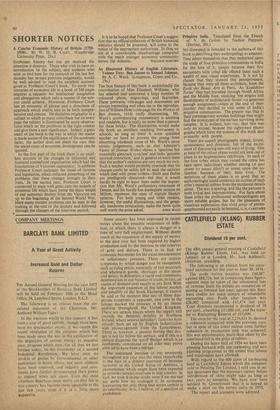Primitive India. Translated from the French of V. de Golish
by Nadine Peppard. (Harrap, 30s.) No disrespect is intended to the authors. of this hook in describing their anthropology as amateur. They admit themselves that they embarked upon the study of four primitive communities in India for the love of it. simply because their first encounters with tribal life offered them such a wealth of new visual experiences. It is not by chance that they showed this perceptiveness, because they were all three architects, from the Fade des Beaux Arts in Paris. As 'Expedition Tortue' they had travelled through North Africa and the Middle East, studying 'the origins and development of architectural forms'—a generous enough assignment—when at the end of their journey they decided to visit some of India's primitive communities. The pretext was that in their contemporary wooden buildings they might find the prototypes of the earliest surviving stone temples. It is evident, him :ver, that this was only an excuse, because the eighty-two photo- graphs which form the essence of this book deal primarily with people.
There are superb photographs indeed, lyrical, spontaneous and dramatic, full of the excite- ment of discovering new-old ways of living. One at least of the colour plates would not look out of place in an Impressionist exhibition. In each of the four tribes which they visited the stress has been upon individuals whether resting (A quoi revent les felines filles?) or intent upon the un- familiar business of their daily lives. The definition of these plates is so good that an anthropologist could construct an outline of each tribe's material culture from the incidental details alone. The text is sparing, and like the pictures is both lyrical and impressionistic. For facts about these tribes the professional anthropologists are more reliable guides, but for the pleasures of vicarious exploration this vivid array of photo- graphs could not easily be bettered. G. M. CARSTAIRS


































 Previous page
Previous page